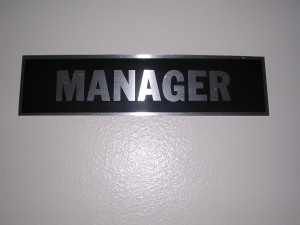 This is three-part series by guest blogger William Dann.
This is three-part series by guest blogger William Dann.
As Ken Blanchard has said, there are two categories of problems in supervision, a “Can’t Do” and a “Won’t Do” problem. “Can’t Do” problems are the responsibility of supervisors to solve. “Won’t Do” problems are the responsibility of employees to solve. I think there is a third problem, “Confidence” problems that fall somewhere in the middle.
In Part 1, of this three-part series, I’ll focus on “Can’t Do” problems. “Can’t Do” problems typically arise because employees have not been given the tools for success. Employees lack:
- Pre-requisite skills and experience. If you hire the wrong person for the job, he or she won’t succeed. While it is true that on-the-job training can be effective, unless employees have the basic skills and experience to be successful, you set them up for failure.
- Clarity on responsibilities. If you fail to provide direction or provide contradictory or conflicting instructions on priorities or deadlines, employees won’t know what to focus on. The lack of clarity can arise because an employee reports to multiple supervisors, which is an organizational issue that will need to change from the top down. Or, more than likely, you, as the direct supervisor, are sending inconsistent messages.
- Understanding of the supervisor’s expectations. Employees may bring the skills and experience required for a given responsibility, but they don’t understand your standards or how you measure performance. Tell them how to meet your expectations.
- Familiarity of rules and procedures. Each organization has its own culture that follows a set of norms or rules. When those rules or standards are unwritten or not communicated, employees, particularly new employees, are bound to break them. Teach new hires “the way” of your organization. For example, one highly successful health care provider requires all new employees to go through a one-week introduction to “the way” at that organization (e.g., its core beliefs, operating principles and how to operate in a team setting).
- Feedback. Without feedback, employees can’t modify their actions, behaviors or performance to meet your expectations. Offer plenty of feedback so that employees know how they are doing and to know what changes they need to make to improve their performance.
While I have focused a bit on new employees here, tenured employees suffer from “Can’t Do” problems, too, when they aren’t being supervised enough. Make sure that you never stop leading and coaching your employees, even your top performers.
What can you start doing today to eliminate “Can’t Do” problems for your employees?
Check back in Friday, April 10 to read Part 2 of the Series: 3 Types of Supervisory Problems, Part 2: Confidence Problems.
William Dann spent 13 years as a CEO before launching his consulting business, Professional Growth Systems, LLC, in 1981 – an organization that has served over 200 organizations in the US and abroad, using proprietary solutions to accelerate performance with as little time and resources as possible. Additionally, Dann has taught for several years at the graduate level at Boston University and is also the founder of BoardGrowth.com, a website devoted to advancing the effectiveness of governing boards. Dann currently resides in Anchorage, Alaska with his family.
Creating High Performers is available in paperback on Amazon.com.
Learn more at www.professionalgrowthsystems.com
Photo Credit: www.freeimages.com/profile/shrubby

0 comments